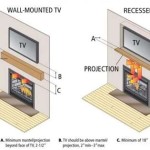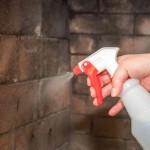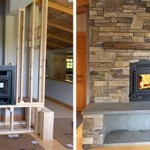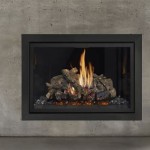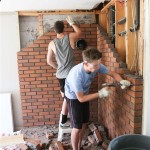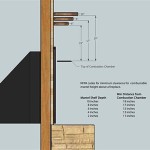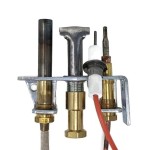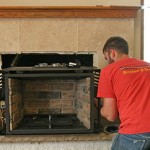Gas Fireplace Thermopile Voltage: Understanding the Key to Ignition
Gas fireplaces, a popular and efficient source of warmth and ambiance, rely on a crucial component known as the thermopile to initiate the ignition process. The thermopile, a sophisticated device, generates voltage when exposed to heat, triggering the gas valve to release fuel and ignite the flames. This intricate interplay between temperature and electricity ensures safe and reliable operation for your fireplace.
Thermopile Function and Operation
A thermopile is a type of thermocouple, a device composed of two dissimilar metals joined at junctions. When exposed to heat, a voltage difference arises between the junctions due to the thermoelectric effect. This voltage, typically measured in millivolts (mV), is proportional to the temperature difference between the hot and cold junctions. In gas fireplaces, the thermopile is positioned near the pilot flame, absorbing heat and generating a specific voltage.
This generated voltage acts as a signal to the gas valve, allowing gas flow and ignition. The thermopile's intricate design allows for precise control over the gas flow, ensuring a safe and efficient flame. The voltage generated by the thermopile is typically in the range of 15 to 30 mV, depending on the specific model and operating conditions. This voltage range is carefully calibrated to ensure optimal performance and safety.
Factors Affecting Thermopile Voltage
Several factors can influence the thermopile voltage, directly impacting the fireplace's performance and safety. Understanding these factors is essential for troubleshooting potential issues and ensuring optimal fireplace operation.
1. Pilot Flame Strength
The pilot flame, the source of heat for the thermopile, plays a critical role in generating the required voltage. A weak or flickering pilot flame can reduce thermopile voltage, leading to ignition problems or inadequate flame control. Ensuring a consistent and strong pilot flame is crucial for reliable fireplace operation.
2. Thermopile Condition
Over time, the thermopile can become contaminated with soot or debris, hindering its efficiency and reducing its voltage output. Regular cleaning of the thermopile and surrounding areas is essential to maintain optimal performance and ensure proper ignition.
3. Ambient Temperature
While the primary heat source is the pilot flame, ambient temperature can also influence thermopile voltage. In colder environments, the thermopile may require a higher voltage to trigger ignition. Conversely, in warmer conditions, the thermopile voltage may be slightly lower.
4. Gas Pressure
The gas pressure supplied to the fireplace can also impact thermopile voltage. Insufficient gas pressure can lead to a weak pilot flame, reducing thermopile voltage and hindering ignition. Conversely, excessive gas pressure can strain the system and pose safety risks.
Monitoring Thermopile Voltage
Monitoring thermopile voltage is crucial for diagnosing potential problems and ensuring optimal fireplace operation. This can be done using a multimeter, a simple and readily available tool.
1. Checking Thermopile Voltage
To check thermopile voltage, disconnect the thermopile wires from the gas valve. Using a multimeter set to millivolt (mV) mode, touch the positive probe to one thermopile wire and the negative probe to the other. With the pilot flame lit, observe the voltage reading. If the reading falls below the manufacturer's specified range, it may indicate a problem with the thermopile or pilot flame.
2. Troubleshooting Low Thermopile Voltage
If the thermopile voltage is below the acceptable range, several steps can be taken to troubleshoot the issue. First, check the pilot flame strength and adjust it if necessary. Second, clean the thermopile and surrounding area to remove any debris. Finally, examine the gas pressure and ensure it's within the specified range.
3. Safety Precautions
It's important to exercise caution when working with gas fireplaces and electrical components. Always disconnect the gas supply before working on the fireplace. If you're unsure about troubleshooting or repair, contact a qualified gas appliance technician.

How To Test Your Thermopile Www Mygasfireplacerepair Com

How To Test Your Thermopile Www Mygasfireplacerepair Com

How To Test Your Thermopile Www Mygasfireplacerepair Com

Thermopile Voltage Low Causes 3 Efficient Solutions
Gas Fireplace Accessories Thermopile Thermocouple Sensor For Ovens 25 30 Pic Au

How A Pilot Light Works Www Mygasfireplacerepair Com

Difference Between Thermopile And Thermocouple 2024 Practical Guide Linquip

750mv Dc Thermopile Powerpile Reading Open Cicuit Voltage And Closed Circuit

3pcs 36 Aluminum Thermopile Generator 750 Millivolt Replacement For Fire Gas Stoves Heat Glo Oven Water Heater Frying Furnace Thermogenerator Yahoo Ping

Using A Gas Fireplace When The Power Is Out We Love Fire
Related Posts

